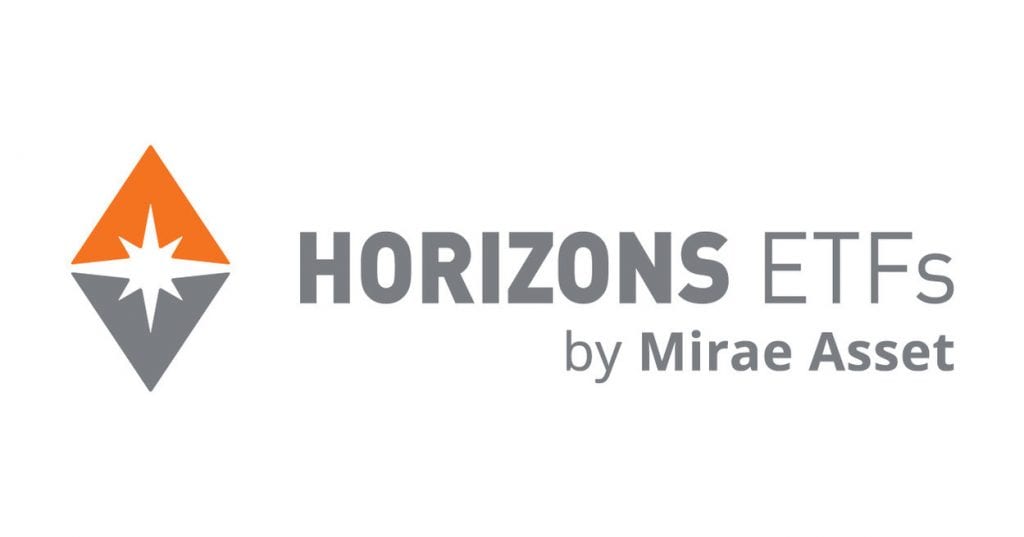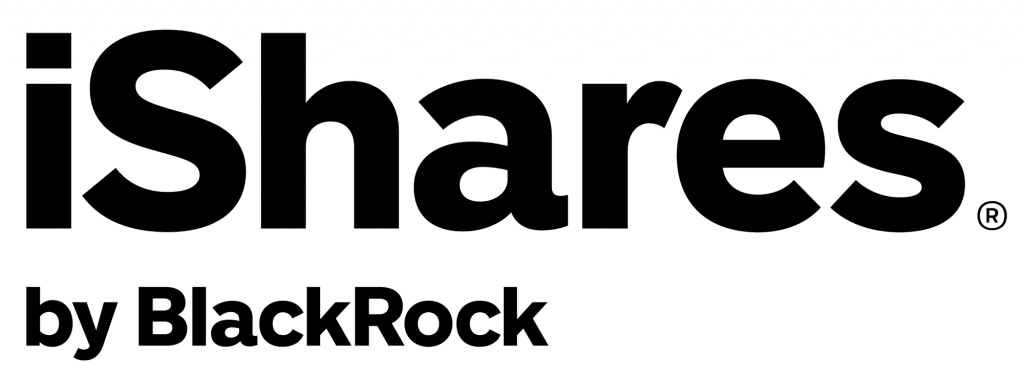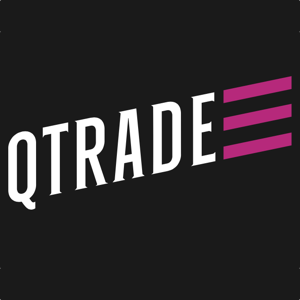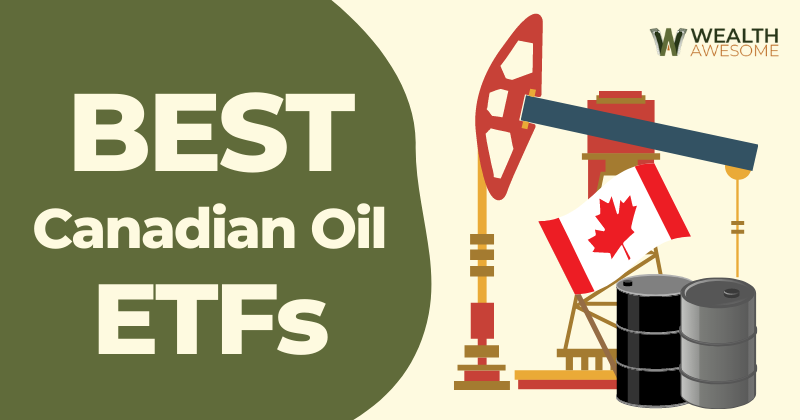Unless you own a large number of warehouses ready to store barrels of oil, investing in this “black gold” commodity through an ETF is one of the best approaches.
It is important to be mindful that the price of oil can be very volatile. On April 20, 2020, WTI oil futures dropped by 300% to trade at roughly -$37 per barrel:

This is why investing in oil through an ETF can be a much less risky approach than buying oil futures outright.
We will outline the best Canadian oil ETFs below and cover some of their key features.
Should you Invest in a Canadian Oil ETF?
Since the oil and gas sector has specific characteristics, investing in an oil or energy ETF makes sense for certain investors.
Canadian oil ETFs would generally not make sense for the following investors:
- Those looking to invest responsibly or concerned with ESG metrics
- Growth investors
- Investors with a low-risk tolerance
On the other hand, oil or energy ETFs may be attractive to investors who:
- Are value investors
- Prefer or require a high-income stream from dividends (for energy ETFs)
- Want to reduce the impact of inflation on their portfolio (in most cases)
In general, equities within the oil and gas sector are not recommended for investors with a low-risk tolerance. Oil futures typically require an even higher risk tolerance.
Best Canadian Oil ETFs
- Horizons S&P/TSX Capped Energy Index ETF (HXE.TO)
- IShares S&P/TSX Capped Energy ETF (XEG.TO)
- BMO Equal Weight Oil & Gas Index ETF (ZEO.TO)
- Horizons Pipelines & Energy Services Index ETF (HOG.TO)
- Horizons Canadian Oil and Gas Equity Covered Call ETF (ENCC.TO)
- Ninepoint Energy Series ETF (NNRG.NE)
- Horizons Crude Oil ETF (HUC.TO)
1. Horizons S&P/TSX Capped Energy Index ETF

- Ticker: HXE.TO
- Inception Date: September 16, 2013
- Assets under Management: $82.97 Million
- Management Expense Ratio: 0.25%
- Management Style: Passive
- Risk Rating: High
- Distribution Yield: N/A
- Stock Price: $30.58
- YTD Return: 0.72%
The most inexpensive Canadian ETF offering investors exposure to oil is the HXE. The ETF targets the broad energy sector in Canada and includes the stocks of companies involved in various stages of the energy process, including extraction and transportation.
HXE is a passive ETF that tracks the S&P/TSX Capped Energy Index (Total Return). This is a market cap-weighted index, meaning that larger companies hold larger positions in the index (and, therefore the ETF).
The ETF, like other total return ETFs offered by Horizons, uses a total return swap strategy to make it more tax efficient for investors. The swap offers investors the same return as the index without holding the underlying stocks. This eliminates distributions and increases tax efficiency.
Horizons’ HXE has a long performance track record and is a decently-sized ETF. Given the fund’s tax-efficient nature, it does not pay distributions and has a yield of 0%.
Between the beginning of 2020 and mid-2022, the Canadian energy sector (as well as HXE) has performed exceptionally well due to rising oil prices.
HXE is rated as a high-risk fund which is in line with most energy-focused funds and investments. Since the fund invests in the Canadian energy sector as a whole, it is not a 100% oil-concentrated investment.
If you are looking for a low MER ETF that invests in the broad Canadian energy sector in a tax-efficient manner (valuable for non-registered accounts), the HXE is an excellent option to consider.

- Ticker: XEG.TO
- Inception Date: March 19, 2001
- Assets under Management: $1.75 Billion
- Management Expense Ratio: 0.61%
- Management Style: Passive
- Risk Rating: High
- Distributions: Quarterly
- Distribution Yield: 3.90%
- Stock Price: $15.19
- YTD Return: 0.68%
Next on the list is one of the most well-known Canadian energy sector ETFs. XEG offered by Blackrock’s iShares also tracks Canadian energy companies involved in various stages of the energy delivery cycle.
XEG is a passively managed ETF that aims to replicate the S&P/TSX Capped Energy Index. The index is market-cap-weighted, so larger companies will have higher weights in both the index and the ETF.
iShares’ XEG comes with a very long performance track record and is a massive ETF in terms of assets under management. It is many times larger than all of the other ETFs on our list.
The ETF offers investors a good yield and pays distributions on a quarterly basis. XEG is more inexpensive than most ETFs on our list but still comes at a significantly higher MER than Horizons’ HXE fund.
Rapidly rising oil prices between early 2020 and mid-2022 have led to strong performance for XEG during this time.
Similar to most other energy ETFs and funds, XEG is rated as a high-risk fund.
If you prefer having a good yield from your Canadian energy ETF, XEG is a great option to consider with good all-around features.
3. BMO Equal Weight Oil & Gas Index ETF

- Ticker: ZEO.TO
- Inception Date: October 20, 2009
- Assets under Management: $210.17 Million
- Management Expense Ratio: 0.61%
- Management Style: Passive
- Risk Rating: High
- Distributions: Quarterly
- Distribution Yield: 5.40%
- Stock Price: $61.83
- YTD Return: 1.46%
Another good option for a Canadian energy fund is BMO’s ZEO ETF. ZEO again invests in the broad energy sector in Canada like most other funds on our list, but equally weights each of the underlying stocks. This leads to a drastically different investment mix when compared to a market cap weighting.
ZEO passively tracks the Solactive Equal Weight Canada Oil & Gas Index.
BMO’s ZEO comes with a long performance track record and is a large ETF by assets. The ETF pays a great dividend yield on a quarterly basis, which will be attractive for investors looking for yield.
ZEO is also rated as carrying a high risk, similar to most oil and gas stock funds or investments. The ETF comes with a fairly average MER.
BMO’s ZEO ETF is a good choice if you are concerned with diversification and want a Canadian energy fund with great features overall.
4. Horizons Pipelines & Energy Services Index ETF

- Ticker: HOG.TO
- Inception Date: July 14, 2014
- Assets under Management: $25.87 Million
- Management Expense Ratio: 0.64%
- Management Style: Passive
- Risk Rating: High
- Distributions: Quarterly
- Distribution Yield: 3.86%
- Stock Price: $10.35
- YTD Return: 3.55%
For investors looking to express a more specific investment view within the oil and gas space, Horizons offers a pipelines and energy services ETF. HOG focuses on energy companies in the midstream space, meaning companies that are involved in:
- Storage
- Transportation
- Wholesale Marketing
Prior to February 26, 2020, the ETF was previously named the Horizons Canadian Midstream Oil & Gas Index ETF. HOG currently passively tracks the Solactive Pipelines & Energy Services Index.
HOG is not a swap-based ETF (like most other Horizons ETFs) and actually holds the underlying securities of the index.
The ETF has a fairly long performance track record and is a small ETF in terms of assets. The fund’s low asset level does put it at risk of closing in the future if it’s unable to attract more assets.
HOG is a high-risk fund, similar to most peers within the oil and gas space. The ETF’s MER is again fairly average.
As a more specific oil and gas investment in the midstream Canadian energy space, HOG from Horizons is a good potential option to consider for oil exposure.
5. Horizons Canadian Oil and Gas Equity Covered Call ETF

- Ticker: ENCC.TO
- Inception Date: April 11, 2011
- Assets under Management: $50.9 Million
- Management Expense Ratio: 0.84%
- Management Style: Active (Covered Calls)
- Risk Rating: High
- Distributions: Monthly
- Distribution Yield: 10.73%
- Stock Price: $10.31
If you are looking for yield from your oil and gas investment, a covered call ETF may be a good strategy to consider. Horizons’ ENCC ETF invests in Canadian oil and gas companies while also offering an attractive monthly income from dividends and covered calls.
ENCC passively tracks the Solactive Equal Weight Canada Oil & Gas Index but is active from a covered call-writing perspective.
A covered call strategy can be useful from an income perspective and perform well in specific market conditions.

ENCC has a long performance track record and is a fairly small ETF. It is likely not small enough to put it at risk of closing down in the future due to a low asset level.
While the ETF is rated as high risk, the addition of a covered call strategy does help to reduce some of the downside volatility (from the constant return of call premiums). The fund comes with a relatively higher MER than some of its peers.
ENCC pays an extremely high yield on a monthly basis to investors.
If you are looking to invest in the Canadian oil and gas sector and are also looking for a high monthly income stream, ENCC is an excellent option to consider.
6. Ninepoint Energy Series ETF

- Ticker: NNRG.NE (NEO Exchange)
- Inception Date: May 11, 2021
- Assets under Management: $1.47 Billion (All Fund Classes)
- Management Fee: 1.50%
- Management Style: Active
- Risk Rating: High
- Distributions: Annually
- Distribution Yield: N/A
- Stock Price: $43.93
- YTD Return: 1.66%
As an actively-managed fund designed to outperform broader energy indices, NNRG is a good option to consider as an actively managed Energy ETF once you have weighed its pros and cons.
With currently a 90% allocation to Canada and a 10% allocation to the US, NNRG invests in mid-cap energy companies in an effort to reward investors with excess returns (returns above and beyond an energy index or the broader energy market).
Similar to hedge funds, NNRG charges a performance fee of 10% on any return above the S&P/TSX Capped Energy Total Return Index. When considering the management fee, performance fee, and trading fees, the total fees that you will pay as an investor will be extremely high relative to passive ETFs.
Despite the high fees, the fund has provided investors with an excellent rate of return. From the beginning of September 2021 to the beginning of September 2022, the fund has achieved a total return of over 100%.
Across the ETF version of the fund and Ninepoint’s mutual fund equivalents (of the strategy), the mandate is massive in terms of assets. While the ETF has a shorter inception date, the strategy behind the fund has a much longer performance track record.
As a concentrated oil and gas fund, NNRG is rated high risk.
If you are a believer in active management and have faith in the current portfolio management team at Ninepoint, NNRG is a great fund to consider.
7. Horizons Crude Oil ETF

- Ticker: HUC.TO
- Inception Date: June 24, 2009
- Assets under Management: $25.17 Million
- Management Expense Ratio: 0.88%
- Management Style: Passive
- Risk Rating: High
- Distributions: N/A
- Stock Price: $21.34
- YTD Return: 4%
As the only ETF on our list investing directly in crude oil, HUC is offered by Horizons and invests in crude oil futures. The futures contracts are rolled every June and December to reduce the negative roll yield of doing so monthly.
The ETF is currency hedged back to the Canadian dollar, eliminating any fluctuations between the US and Canadian dollars.
The ETF aims to passively provide investors with the return of the Solactive Light Sweet Crude Oil Winter MD Rolling Futures Index ER.
As a fund investing directly in commodity futures, it should likely only be used for tactical purposes over the short term. As an example, the performance of the ETF over a 12-year period from early 2010 to early 2022 has been negative.
Given the nature of futures contracts, an ETF investing directly in crude oil can be considered much riskier than a traditional energy ETF and is generally not suitable for most investors as a long-term core position within a portfolio.
HUC has a long performance track record and is a very small ETF in terms of assets under management. Since the fund only invests in crude oil futures, it does not pay dividends, unlike most energy sector ETFs that invest in stocks of oil companies.
HUC comes with a relatively higher MER than most energy ETFs on our list.
As a short-term tactical investment designed to take advantage of rising oil prices, HUC can lead to good short-term performance. As an addition to a long-term portfolio, we recommend other energy ETFs on our list instead of HUC.
Pros and Cons of Investing in Canadian Oil ETFs
Investing in oil, whether through an energy or oil ETF, comes with advantages and disadvantages. These are largely based on the characteristics of oil itself.
It is important to assess your personal goals and investment time horizon before choosing one or more oil ETFs to invest in.
- Generally strong performance during inflationary periods
- Oil is still a critical source of energy for most individuals around the world
- Oil companies (for energy ETFs) are typically value stocks with great dividend yields
- Oil futures have performed poorly over the long term (and are better tactical investments)
- Traditional energy is increasingly threatened by renewable and clean energy
- Oil and oil companies are frequently excluded from funds and benchmarks due to ESG concerns
Oil Vs. Energy ETFs – What’s the Difference?
While both oil and energy ETFs add exposure to changes in the commodity’s prices, it’s important to understand the key difference between the two.
An oil ETF typically has only exposure to the price of oil as a commodity. This is typically done by investing in oil futures, which can be extremely volatile (as they were throughout 2020).
Energy ETFs also usually have high exposure to the price of oil – they invest in stocks of companies that usually directly benefit from rising oil prices. These can include oil extraction companies or oil transportation companies.
Investing in oil through an energy ETF allows you to choose companies with good operations and solid growth prospects. We highly recommend this approach, as this can help to reduce the number of unpredictable movements which sometimes come with oil prices.
Strategies for Adding Oil ETFs to your Portfolio
Adding oil exposure varies slightly depending on whether you are investing in an oil futures ETF or an energy ETF.
How to Add Oil ETFs to your Portfolio (Futures-based)
An ETF tracking oil futures has a different role in the portfolio in most cases. As we mentioned before, investing in an ETF tracking oil futures is generally riskier and more volatile than a more generic energy sector ETF.
The long-term performance of oil as a commodity has been extremely volatile and likely only rewarded investors who were lucky to invest at specific points in time.

Investing in crude oil likely makes sense under the following circumstances:
- The investment is short-term and tactical
- You are looking to take advantage of an inflationary environment in the short term
- Your portfolio needs a very small commodity position which can be allocated to an oil futures ETF
How to Add an Energy ETF to your Portfolio
The Canadian energy sector has faced significantly less volatility than oil futures. Despite this, the Canadian energy sector has underperformed the broader Canadian market significantly over a long period of time.

Canadian oil companies tend to be value stocks that pay generous dividends to investors. Energy ETFs within a portfolio can work under these circumstances:
- You are not concerned about the long-term headwinds from renewable energy
- Your portfolio needs value stocks that typically pay an above-average yield
- A long-term inflationary environment is likely to persist
In this situation, investors can have a similar exposure to the energy sector as other sectors or have an underweight/overweight to the sector. In any case, a 100% allocation to the energy sector is likely not prudent and leaves your portfolio extremely under-diversified.
How can I Invest in Crude Oil in Canada?
Investing in crude oil can be done in several ways:
- Purchasing an energy fund
- Buying an oil futures fund
- Buying oil futures directly
- Purchasing complex derivatives (such as swaps)
FAQs
Which Canadian ETFs offer exposure to the oil sands industry?
Canadian ETFs that provide exposure to the oil sands industry include funds like the iShares S&P/TSX Capped Energy Index ETF (XEG) and the BMO Equal Weight Oil & Gas Index ETF (ZEO).
Both of these ETFs encompass a broad range of Canadian energy stocks, many of which have substantial investments in the oil sands.
Which Canadian oil companies are considered the best investments?
Historically, significant players in the Canadian oil sector include Suncor Energy, Canadian Natural Resources Limited, and Cenovus Energy. These corporations have established operations, significant oil reserves, and have demonstrated resilience across different market circumstances.
Which Oil & Gas ETF is Best?
The Horizons S&P/TSX Capped Energy Index ETF (HXE.TO) is likely the best option to consider in the Canadian energy space as it currently comes with the lowest MER. This is especially true if you are looking for tax efficiency and don’t need income.
How to Buy the Best Canadian Oil ETFs
The cheapest way to buy ETFs is from discount brokers. My top choices in Canada are:

- 105 commission-free ETFs to buy and sell
- Excellent customer service
- Top-notch market research tools
- Easy-to-use and stable platform

- Stock and ETF buys and sells have $0 trading fees
- Desktop and mobile trading
- Reputable fintech company
- Fractional shares available
To learn more, check out my full breakdown of the best trading platforms in Canada.
Conclusion

If you want to add Canadian oil exposure to your portfolio, consider whether to do it through an oil futures ETF or a broader energy sector ETF.
In most situations, opting for the energy sector ETF is likely a better option instead of adding exposure directly to oil or oil futures.
If you are looking to potentially save on management fees, make sure to also consider some of the best energy stocks in Canada.






ZJO has been delisted https://www.bmogam.com/ca-en/advisors/zjo-bmo-junior-oil-index-etf/
Hey Dennis thanks for letting me know! I’ve included a note in the article now. I’ll look at replacing it with something else in the future.
HOU/HOD are scams since many years, it should not exist at all, they have many victims since years, including I!
I’ve lost so much with horizons products!